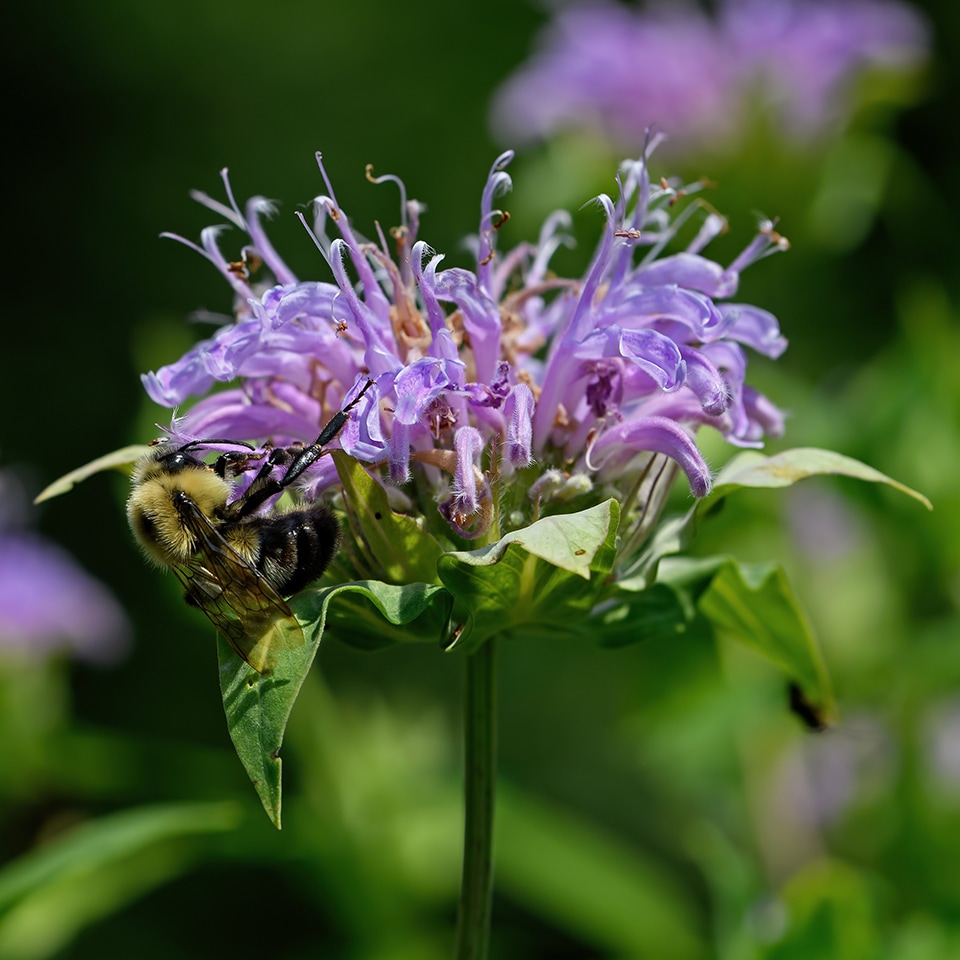Planting a Piedmont Prairie Helped Change the Way I See the World
A story about Basil, flowers, and finding a deeper connection with Mother Earth
It was a hot, sweaty afternoon in June of 2016. I simply could not – or rather, would not – mow my front yard any longer. Growing up, my brothers and I used a small, push-behind mower to cut the 3-acre field surrounding our house. Because of this, I really hated mowing.

That year, I planted some trees and shrubs in my front lawn to get rid of the grass. I knew a lot about both through my work at Leaf & Limb. However, they were not enough to fully replace the grass. So I turned to flowers and ground covers to fill the gaps and open spaces. Unfortunately, I knew absolutely nothing about either category of plants. I was starting from scratch. After researching flowers and a handful of visits to local nurseries, I added all sorts of new plants to my yard.
I discovered that I loved flowers! Over the next few years, I filled my front and back yards with all sorts of beautiful forbs. I loved being barefoot in the yard and working without gloves. Getting my fingers and toes dirty left me feeling rooted in the land and glowing with good vibes. (It wasn't until years later that I learned that the microbes in healthy soil stimulate the release of serotonin, which has all sorts of tremendous health benefits.)
But the part I enjoyed most was watching life unfold in the garden.
I was fascinated by the slow growth and evolution of every plant. They each behave, react, and age differently across seasons. I had no idea that North Carolina has so many different types of bees! Some drone by like fluffy blimps while others zip from flower to flower like hyperactive hummingbirds. Some shine green, some cut leaves, and many dig holes. I saw an assassin bug for the first time and watched transfixed as it stalked after its prey through the dense canopy of an American Beautyberry. After a few seasons, male Anoles, a lizard native to NC, regularly showed up in the garden. I would spot them signaling potential mates with their red throats during hot summer afternoons. The red throats worked because I noticed that a cohort of smaller Anoles would show up some months later.
Butterflies soared in for landings like planes at a busy airport. It turns out the non-native Butterfly Bush was not much of a butterfly magnet at all. I learned that our local insects are not able to feed on most non-native plants. The real butterfly magnets were the native species like Virginia Sweetspire, Rudbeckia, and Mountain Mint. Speaking of butterflies, I’ll never forget the first time a Monarch gently glided into my garden one warm October afternoon to feed on my Butterfly Milkweed. Its name suits it well; I felt as if royalty had indeed arrived.
Sadly, as I write this, these Monarchs are close to being extinct. They are teetering on the brink. Why? The use of pesticides and development in general have played a big role in their decline. Another big reason is that they simply do not have enough food. Imagine that – an entire species dying for lack of food. Yet their food is a beautiful flower that we can all plant in our yards, in our city parks, and along roadsides. It’s a gorgeous orange flower called Asclepias tuberosa but more commonly known as Butterfly Milkweed. It’s easy to grow from seed and is quite tolerant of hot, dry conditions. It does well here in the Piedmont. We can have something of beauty and help save a species. It’s a win-win.
During this time, I was learning so much by researching, visiting local gardens, and, most importantly, diving in and getting my hands dirty. The experiential piece was essential because it directly connected me with Nature. Over time, this helped me better understand the depth of life that makes up our planet in a non-intellectual sense. The Asaro tribe of Indonesia and Papua New Guinea have a saying that best describes what I'm trying to say: "Knowledge is only a rumor until it lives in the muscle."
These hours working in the garden felt meaningful. As time passed, I began to feel a real connection with something bigger than me. These experiences and knowledge began filling a hole in me that I did not even know existed. I began to view Earth and other life in a new light. It also heavily impacted my profession of working with trees. I understood trees in new ways, which helped influence a series of changes at Leaf & Limb.
Unfortunately, my life got busier, especially with the arrival of my children. I could not give my garden the amount of time and attention I wanted to. In particular, I could not spend hours every weekend pulling weeds. I began questioning the notion of weeding – why do I have to weed? No one is pulling weeds out in Nature. Yet breathtaking ecosystems exist. Perhaps I could recreate this in my yard?

With time, I discovered the prairie, also called a meadow. Seeing one for the first time is like stumbling on the site of a life-giving bomb that exploded with flowers, butterflies, grasshoppers, birds, and greenery swaying in the breeze. They are native flowers and grasses that grow with one another, creating a tight-knit community of plants that are largely able to avoid being invaded and overrun by other species, i.e., weeds. As is often the case with Nature, these plants provide collectively more life living together in community than if they were all living as individual plants in a traditional garden setting.
I spent a lot of time learning about these ecosystems through research and the act of doing. I planted a Piedmont Prairie in an open space in my backyard and began transforming part of my front yard. I even converted my neighbor's front yard from grass into prairie after he graciously allowed me to experiment with his space. It takes time and energy to plant and maintain a prairie during its early years. It also requires an annoying amount of patience; nothing about a prairie is fast or provides any instant gratification.
But once it gets going, a Piedmont Prairie is incredible.
It requires almost no maintenance – simply one cut or burn per year. It requires no fertilization, pesticides, or treatments of any variety. It does not have to be watered beyond the first season (and even then, this is often not necessary). These plant communities form deep and dense root systems that help build rich soil. Compared to a traditional yard, they sequester far more carbon, pull more water into our local aquifers (versus washing away to the storm drain), and feed and house exponentially more life below and above ground. All this is amazing, but the best part of a prairie is that they are just WILD with life! It's incredible to experience the sheer diversity of living beings that dwell within these ecosystems.
One early morning in the garden, it hit me hard: though so much has been lost, this planet is still bursting with life. Somewhere deep in my chest I felt connected. Working with trees and then the plants in my garden fundamentally changed me and the way I see the world. I’m both lucky and hugely grateful for these opportunities. The more I learn, the more appreciation and love I feel for the ancient life with whom we share this home planet.
So many other intelligent beings need this home as much as we do. We are inextricably tied to all of life on Earth, from fish to flowers, wind to water, and mammals to mountains. All of life is connected, helping one helps all, and there is strength in unity. The opposite is also true. By achieving good for all and being stewards of our shared resources, we attain a brighter future for all of life on this planet.
In their most basic sense, Piedmont Prairies are a way to get rid of your grass in exchange for something that requires less work, no pesticides, and no fertilizers. They sequester carbon and help soak up fresh water to replenish our aquifers.
But most importantly, they are a place where life and beauty can thrive.